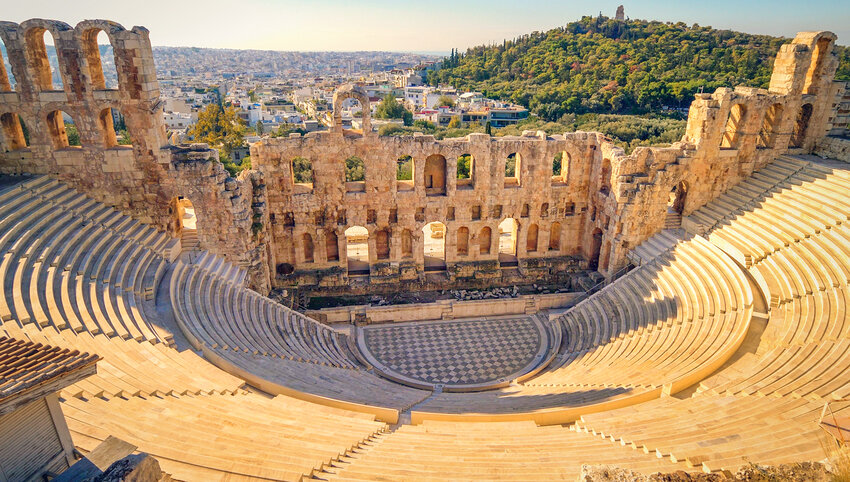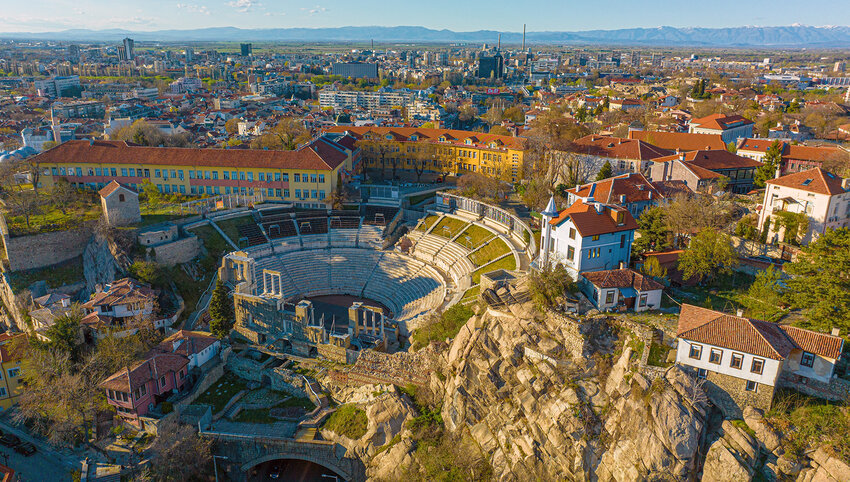From its paradisiacal islands to its countless ancient archaeological sites, Greece is a place unlike any other. But while tourists often flock to popular locations such as the Acropolis of Athens and the island of Santorini, it’s just as worthwhile to go off the beaten path and explore some less crowded, yet equally awe-inspiring locations. If you think you’ve seen all that Greece has to offer then think again, as these hidden gems will blow you away with their rich history and scenic beauty.
Delos
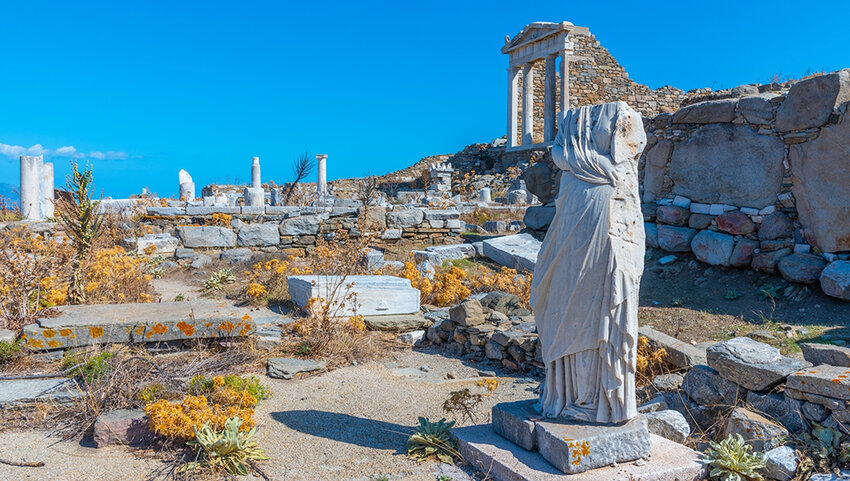
In Greek mythology, the tiny island of Delos is considered the birthplace of Apollo, the god of music, poetry, and art. So it’s only appropriate that this beautiful island paradise looks as if it came straight out of a painting. Nestled within the Cyclades archipelago of the Aegean Sea, Delos historically welcomed settlers as far back as the 3rd millennium BCE, a time period from which many archeological relics remain. Today, the island is uninhabited due to its remote location, though it’s that inaccessibility that makes Delos such an appealing destination.
This UNESCO World Heritage Site is accessible by a number of regional ferries. Upon arrival, there are countless sites to see, turning the whole island into an open-air museum. Notable structures found throughout Delos’ mere 1.3 square miles of area include the remnants of nine historic marble lions, as well as pieces of a once-colossal statue dedicated to Apollo himself. More can be learned about the history of Delos at the island’s tiny archaeological museum, which features artifacts including vibrant mosaics from the House of Dionysus. Other spots to see include the remains of the Temple of Isis from the 2nd century BCE, and the Ancient Theater of Delos from the 3rd century BCE — the latter of which was once capable of holding 5,000 spectators.
Temple of Poseidon
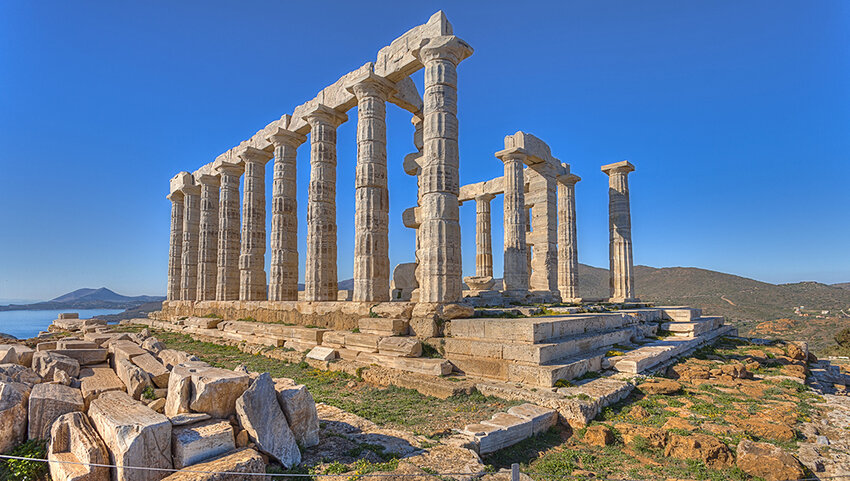
The Temple of Poseidon dates to between 444 and 440 BCE and is located at Sounion, a once-sacred site 40 miles outside of Athens. Given that Poseidon is the god of the sea, it’s fitting that this temple lies atop a cliffside vista overlooking the sparkling Aegean waters. The temple's construction was spearheaded by ancient Greek statesman Pericles, the man behind the Parthenon. Even with this connection, the Temple of Poseidon remains a far less frequented tourist attraction.
At its peak, the Temple of Poseidon boasted 34 Doric columns composed of locally-sourced marble, of which 15 columns remain today. Since the site was thoroughly excavated in the early 20th century, the temple turned up many historic carvings and handmade pottery, all of which hold tremendous archaeological significance. Today, the temple can be easily accessed by bus or car, and is well worth the 90-minute journey from Athens’ city center.
Kythira

Located just south of the Peloponnese peninsula is the tiny, idyllic escape known as Kythira. Given its lack of natural harbors, the island played little significance in ancient political times, though it was inhabited as far back as the Minoan Period (3000 to 1200 BCE). Kythira is considered the mythological birthplace of Aphrodite, the god of beauty, and was home to an ancient cult dedicated to the mighty goddess. Over time, Kythira served as a Spartan outpost and endured countless invasions, though it has since transitioned into its current status as an untouched island paradise.
The many residents of Kythira live in beautiful white houses that climb up the island’s rugged terrain, culminating in the Castle of Chora at Kythira’s highest point. This 13th-century fortress was able to see ships approaching from three different seas: the Ionian, Aegean, and Cretan. There are multiple museums chronicling the island’s archaeological and Byzantine history, as Kythira was part of the Byzantine Empire in the 7th century. Once you’ve learned all there is to know about the past, it’s worth exploring Kythira’s many natural wonders, from caves to grottos and sandy beaches where you can spend hours basking under the Mediterranean sun.
Theatre of Dionysus

If you’re visiting the nearby Acropolis, then a quick jaunt over to the Theatre of Dionysus is well worth your time. Located in central Athens, this performance space was the first theater of its kind, and capable of accommodating 17,000 spectators at its peak. Famous ancient Greek playwrights brought their works to be performed on site including Aeschylus and Sophocles, and the theater is considered by many to be the birthplace of Greek drama.
The theater was dedicated in ancient times to Dionysus, the god of ecstasy and wine, and it was during festivals in his honor that many plays were performed here. Tragically, the theater fell into disrepair during Byzantine rule but was rediscovered in 1765 and later restored throughout the 19th century. Today, visitors can bask in the aura that emanates throughout this ancient site, imagining what it was once like to witness the many dramatic works that were performed here.
Samaria Gorge
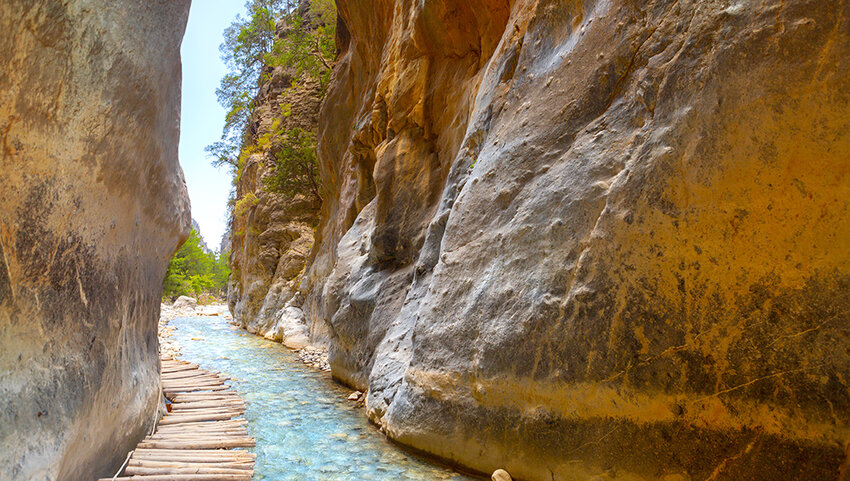
As the largest and most populous Greek island, Crete as a whole isn’t exactly what you’d call a hidden gem. But contained within Crete is the Samaria Gorge, a World Biosphere Reserve that truly embraces being “off the beaten path.” With spectacular geological value and unparalleled biodiversity, Samaria Gorge is a must-visit for nature lovers, animal lovers, and hikers alike, as the gorge’s steepness and inaccessibility have left the terrain largely untouched.
Samaria Gorge is perhaps best known for a hiking trail that descends from an elevation of 4,035 feet down to sea level. The trail includes more challenging portions such as “the Gates” — a narrow stretch that’s only 13 feet wide and is surrounded by looming cliffs stretching hundreds of feet in the air. For those more interested in fauna, the trail is also home to endemic species such as the cliff-climbing Creten Agrimi goat, rare bearded vultures, and horseshoe bats. Upon arriving at the end, be sure to gaze out across the water toward the island of Gavdos, which denotes the southernmost point in all of Europe.
Tower of the Winds

Athens’ Tower of the Winds is a fascinating archaeological relic, as it’s considered to be the world’s first ever meteorological station. The tower was constructed between 100 and 50 BCE by astronomer Andronicus of Cyrrhus, and it was originally built to track time. The Tower of the Winds once included a water clock, and over time it even developed into serving as a church’s bell tower.
The building itself features a unique shape, ascending 42 feet into the air with eight sides — each of which represents a distinct direction on a compass. Furthermore, the tower holds incredible archeological significance as its stone roof is one of the few roofs of an ancient building to remain intact today. Found throughout the tower include relics from the many cultures that occupied the site over the course of history, from ancient frescoes to Arabic calligraphy dating to the late Ottoman period. The Tower of the Winds was recently restored in 2015, and now welcomes visitors interested in the history of both Greece and meteorology.

